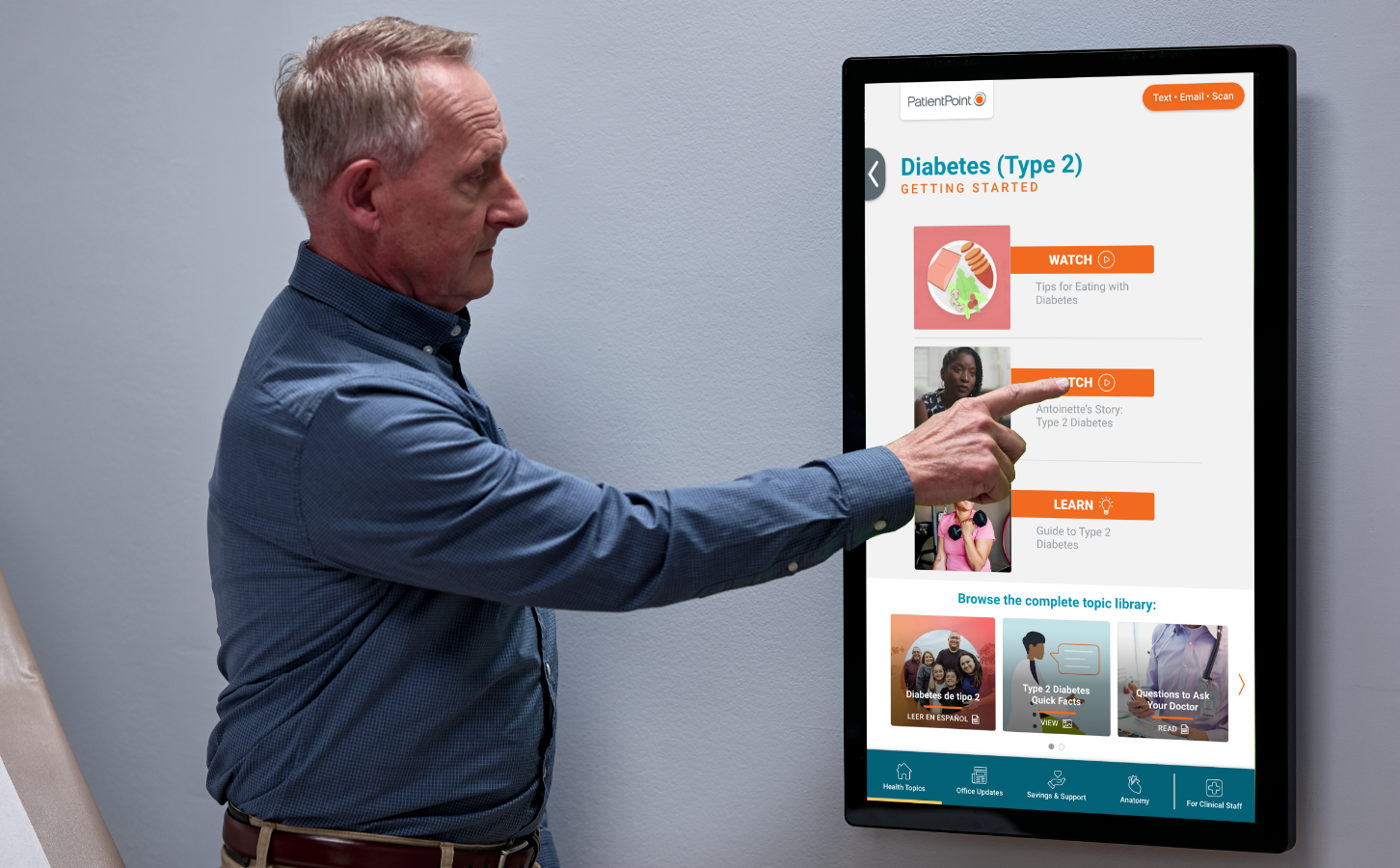Patient engagement—defined as the level to which a patient takes an active role in their healthcare journey—requires simple communication, easily accessible education and collaboration between healthcare providers and patients. It’s credited with contributing to improved patient outcomes, patient care experiences and patient satisfaction. Conversely, unengaged patients are three times more likely to have unmet medical needs and are two times as likely to defer care. Engaging patients at every point possible is essential for improving healthcare quality and patients’ overall health.
There are many tools and tactics for engaging patients when they’re outside the office, like communicating through patient portals, recording vitals through remote patient monitoring or sending notifications to remind patients about their medication. However, when in the office, engagement still relies heavily on verbal communication between the patient and provider. While this does work, many patients have low health literacy or communication barriers that can negatively impact what they understand. A different approach is needed to give all patients the best care experience
54% are afraid to ask questions because they didn’t think they’d be able to understand the answer.
Information is everything
Almost half of patients feel anxiety during an appointment. When asked what contributes to these feelings, 48% said it comes from not having enough information or education to help them prepare for the visit. Practices need to provide patients with relevant health information that prepares patients for their conversation with their doctor and relieves them of some stress and anxiety. By getting patients into a calmer and more attentive mindset, you can increase patient participation and collaboration with providers. With the right information, patients will also get many questions answered before meeting with the doctor so more of the meeting time can be spent on in-depth conversation.
Not all information works the same, however. When sharing educational material, it needs to be easily digestible and easy to understand. During conversation, doctors should use plain language, take time to listen to patients’ questions and incorporate the teach-back method.
Of the patients who say they trust their doctor, 62% say it comes from the doctor’s ability to explain conditions and symptoms in simple terms.
Above and beyond
There are other tools for the exam room that can engage patients even more. Clear communication and straightforward information is a great first step but adding videos and 3D anatomicals can make it easier for patients to understand complex conditions and symptoms—especially for the 65% of people who consider themselves visual learners.
Patient engagement devices in the exam room combine all of the tactics above into one patient engagement platform. Using a digital exam room touchscreen, patients have access to relevant information that prepares them for their meeting with their doctor, decreases stress and improves feelings of trust and motivation. Learn more about our exam room devices.

